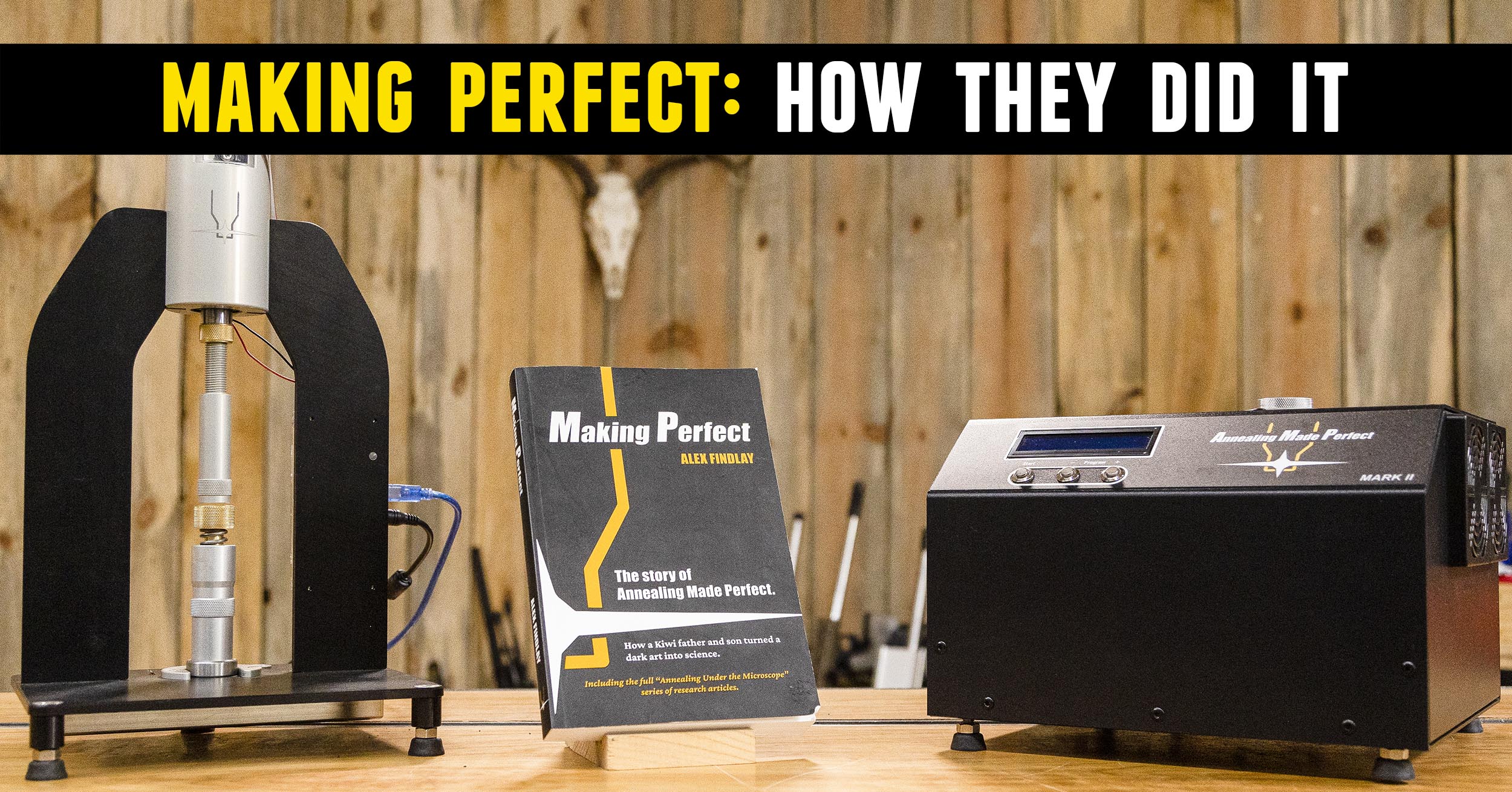A Kiwi father and son set out to solve some seemingly impossible technical problems and built a successful business in the process. How much do you know about Annealing Made Perfect? You can now read the book to find out!
Disclaimer
Ultimate Reloader LLC / Making with Metal Disclaimer: (by reading this article and/or watching video content you accept these terms). The content on this website (including videos, articles, ammunition reloading data, technical articles, gunsmithing and other information) is for demonstration purposes only. Do not attempt any of the processes or procedures shown or described on this website. All gunsmithing procedures should be carried out by a qualified and licensed gunsmith at their own risk. Do not attempt to repair or modify any firearms based on information on this website. Ultimate Reloader, LLC and Making With Metal can not be held liable for property or personal damage due to viewers/readers of this website performing activities, procedures, techniques, or practices described in whole or part on this website. By accepting these terms, you agree that you alone are solely responsible for your own safety and property as it pertains to activities, procedures, techniques, or practices described in whole or part on this website.
About Making Perfect:
We’ve featured Annealing Made Perfect’s AMP Mark II Annealer and the AMP Press on the channel, but we’ve never talked about the people behind the product.
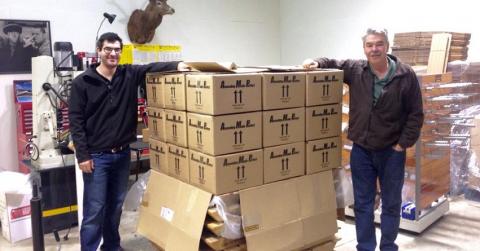
A few months ago, Alex Findlay sent me Making Perfect, a book detailing how he and his son Matt began their company.
From AMP Annealing:

“Making Perfect” by Alex Findlay tells the full story of AMP Annealing. In 2012, Alex and Matt embarked on a mission to create the world’s best cartridge case annealer. They ended up doing much more. This is the story of how they did it, when they did it, and who helped. Includes the full “Annealing Under the Microscope” series of research articles.
Personally, I was drawn into the story. If you want to read it yourself, the book is 326 pages long and covers AMP history, the development of the AMP annealer and press, research and more. AMP’s annealer is the only viable commercial product that is a consumer inductive annealer for brass cases, so the technology is fascinating. The entire Annealing Under the Microscope 5-part series is included in the book as well.
The book featured a lot of industry faces, including mine, which was both an honor and surprise.
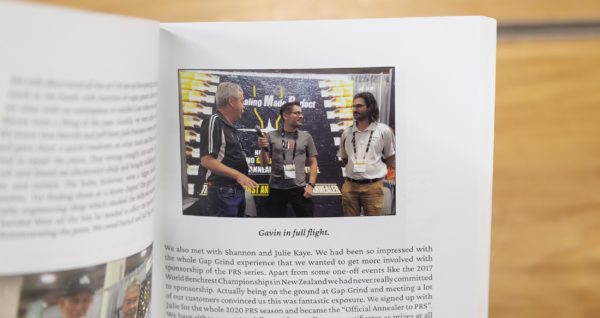
The Story
Alex and Matt wanted to create a safe and easy to use product that was repeatable with a proper hardness result.
AMP Annealing Ltd. was incorporated on April 30, 2012. They partnered with Auckland University of Technology (AUT) and began intense research. This process lasted until 2015, when they were able to demonstrate their findings for the first time in product form.
One of the biggest hurdles was figuring out how to not blow up the circuit board — a common occurrence during research and development. Initial challenges revolved around inductor design: fixed air gap vs. variable air gap, how to get even heating around the entire case mouth and shoulder, and more. Learning about Micro-Vickers hardness testing also made the list. A pilot design also needed to be created and tested over several iterations.
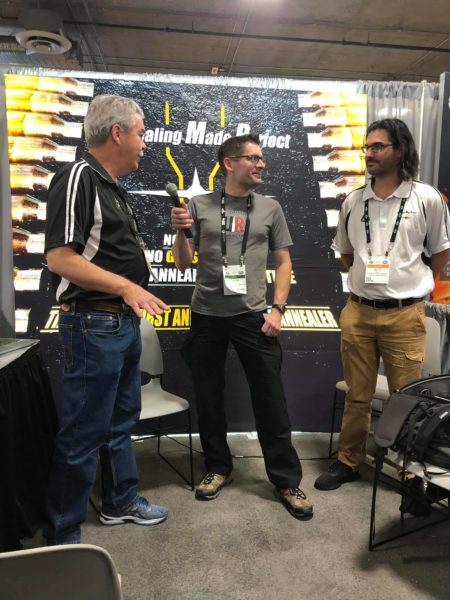
AMP debuted its first functional prototype at the 2015 SHOT Show. While it was limited in functionality, it garnered the attention of many industry elites. AMP demonstrated production samples at SHOT Show 2016, with first units being sold the same year.
AZTEC
Ever since I first touched the AMP Annealer, I’ve wondered about the analyzing capabilities. When you run an analyze pass on a case, the machine brings the case to the melting point and somehow the machine magically knows what optimal annealing should be. This is generated in terms of a code which corresponds to how long and how much heat the induction process lasts for. This chapter in the book talks about the breakthrough moment AMP had. There’s a lot of data and I won’t give it away — you’ll have to read the book to learn how AZTEC works! It truly is brilliant. The result was a software update you could buy that allowed automatic analyzing to happen. Initially, Alex sat in a lab and manually tested various cases with all sorts of variations. He used this information to generate a list of codes for customers to apply. Now, with AZTEC, AMP has been able to crowdsource data to provide a table of codes for all different types of brass. You can use the table of codes or analyze your own cases.
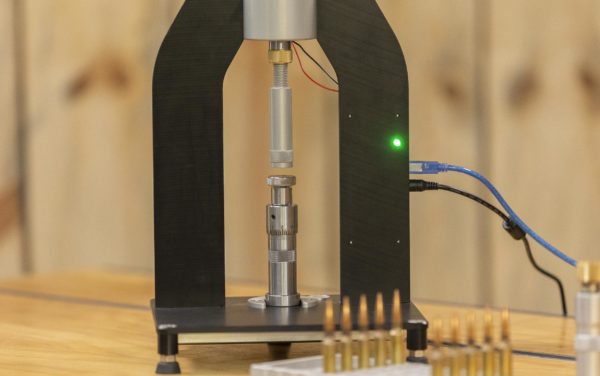
Above: The AMP Press in action
Given all this new information, Alex and Matt wondered how they could validate the information for loaded ammunition. They needed to plot bullet seating force vs. bullet seating distance. There are multiple products on the market that give instantaneous forces while seating bullets, but a fluctuating needle makes it hard to accurately capture data. The AMP Press was the answer. It produces a force-distance plot, making it easy to review data. We’ve executed a variety of experiments using the AMP Press, including looking at neck brushing and how brass prep affects bullet seating.
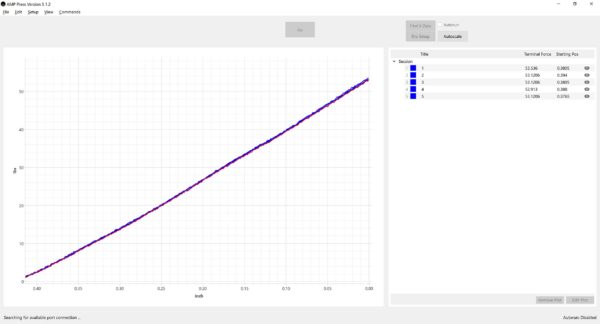
This press is a very precise instrument and has a simulation die that allows you to validate the machine is acting correctly. You can use this machine to ensure quality, understand components and conduct research.
Conclusion
The end of the book includes the entire Annealing Under the Microscope series — the world’s most comprehensive research on brass case annealing. It even includes certified laboratory reports! This series covers properties of brass, variances by brand/lot, factors affecting neck tension, case weight, benefits, testing, and more. Neck tension is an interesting thing. You might assume that if your case neck is too hard, you’d have excessive neck tension. The AMP team discovered that in reality, there is more spring back which can result in too little neck tension. It’s hard to quantify and correlate these things until you look at a large amount of data.
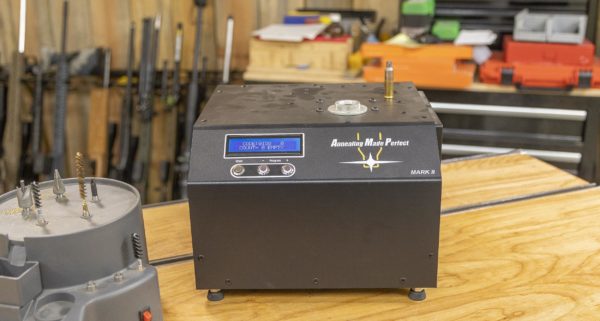
Many have asked me if using the AMP Press and Annealer makes a difference on group size. Yes, it does. The AMP team can confirm this. If you have any questions about AMP products, brass, or induction annealing, this book has answers. As a business owner myself, I was also particularly interested in product development and the history of the business.
Get the Gear!
Read the full story on your own!
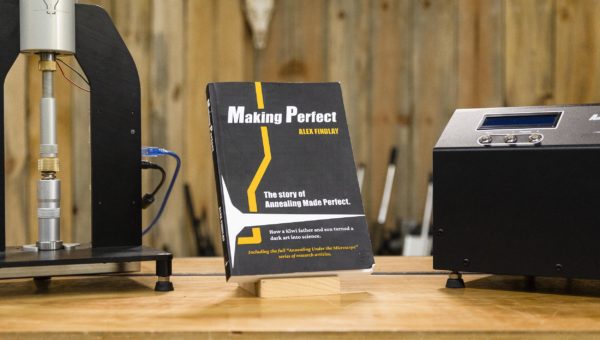
Making Perfect by Alex Findlay is available for $39.90 from AMP Annealing.
You can also find the AMP Press and AMP Mark II on their site as well.
Don’t miss out on Ultimate Reloader updates, make sure you’re subscribed!
Thanks,
Gavin Gear
